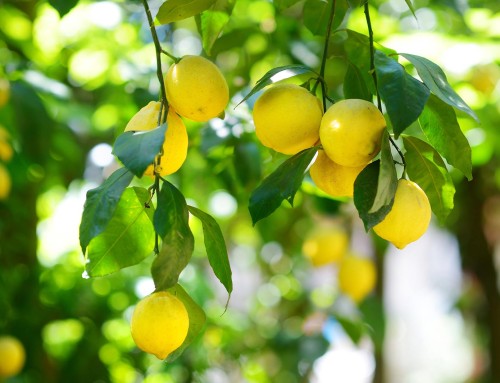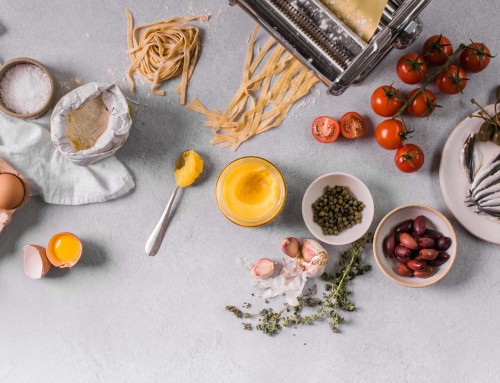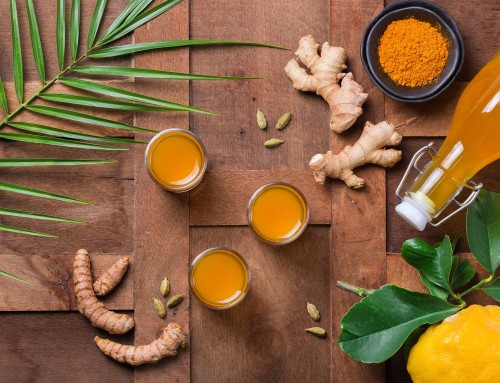Understanding the 5 Subdoshas of Kapha
According to Ayurvedic wisdom, our body and its functions are governed by a unique blend of the three doshas, or mind-body principles: Vata, Pitta, and Kapha.

“Kapha is that quality of our physiology which increases with close contact of water,” says Dinesh Gyawali, Ph.D., a classically trained Ayurveda Vaidya (Ayurvedic expert) and Assistant Professor at Maharishi University of Management. Generally speaking, Kapha has a binding quality in the body and governs structure, lubrication, and nutrition. It moderates things like weight, growth, lubrication of the lungs, and formation of the seven tissues: blood, fat, muscle, bone, marrow, nutritive fluids, and reproductive tissue. It also has a cooling influence, according to Gyawali.
“Ayurveda compares Kapha with the Moon. It keeps our body nourished and cools it down just like the moon.”
(Vata is associated with air and space, and Pitta is associated with fire and water).
Like the other two doshas, Kapha contains five distinct subdoshas that regulate specific bodily processes and regions. Understanding them will help you gain insights into the subtle nuances of Kapha dosha’s influence on your mind, body, and emotions.

1. Tarpaka Kapha
According to Gyawali, the Sanskrit word Tarpaka means “one that satiates or nourishes”.
“Tarpaka Kapha is located in the head and nourishes the entire nervous system,” he says. “The human brain is the center of the nervous system, where all the sensory and motor nerves arise from and lead to. The brain is responsible for handling all the sense and action organs—Indriyas—and Tarpaka Kapha provides lubrication to the brain tissues. From a Western perspective, it is often also correlated with cerebrospinal fluid.”
When out of balance, this subdosha can lead to a lack of clarity in the mind. Impaired or slow learning are signs that Tarpaka Kapha might be imbalanced, along with weakened memory and emotional issues like irritability, anger, greed, and envy.


Since Tarpaka Kapha is related to the highly responsive nervous system, there are many easy ways to maintain balances, according to Gyawali. “Spiritual practices like meditation help a lot,” he says. “Herbs that work on the nervous system also are helpful—herbs like ginger, long pepper, and calamus are useful.” Stress-Free Emotions (MA7694) promotes emotional balance, and Blissful Joy (MA1402) can help uplift the emotions and relieve feelings of sadness.

2. Bodhaka Kapha
The word Bodhaka signifies knowledge, and this subdosha is responsible for the subtle intelligence required to correctly identify tastes.
“Bodhaka Kapha is mainly located in the mouth and tongue, as well as the throat region, which is the root of the tongue,” Gyawali says. “As the tongue is the sense organ associated with taste, this subdosha is also connected with the parietal lobe of the brain, which processes tastes. As we know, consciousness is primary in everything—without this differentiating quality of consciousness, it is impossible for Bodhaka Kapha to act. So, this subdosha acts not only on the physical level of saliva and enzymes but on a deeper level of intelligence as well. It’s also responsible for the quality of voice and is very sensitive to emotions.”
When Bodhaka Kapha is out of balance, the process of digestion is disturbed from its initial stages. Saliva regulation is disrupted, which slows down enzyme production. The quality of one’s voice can be impaired as well. “Think of times when we are under stressful situations,” Gyawali explains. “This impacts our voice and speech, and we won’t be able to determine the quality of food and properly identify the taste.”


Certain herbs and herbal preparations can help keep Bodhaka Kapha in balance. “Licorice helps in increasing Bodhaka Kapha and causes lubrication in the throat, whereas black pepper, ginger, and long pepper (as in Trikatu with Clove (MA99) help in reducing this subdosha when overactive. Our Throat Soothe Syrup (MA3357) and Throat Ease Micropills (MA333) are good examples of herbal preparations that help balance Bodhaka Kapha.”

3. Avalambak Kapha
According to Gyawali, the word Avalambak means “to hold.”
“Avalambaka Kapha literally holds the organs in the upper thorax, or chest region, of our body,” he says. “All these structures are the location of Avalambaka Kapha—the lungs and their inner structures as well as the layers covering the lungs, trachea, bronchi, and the pericardium, which is the fibrous sac surrounding the heart. The lungs expand and contract as we breathe, and Avalambaka Kapha in between the pleural layers provides lubrication and nourishment. The heart also runs continuously. In order to run all this machinery smoothly, the Avalambaka Kapha in the pericardial layers plays a vital role—on the emotional level as well as the physical. Think of how one’s breathing pattern changes when she or he is in distress, or how a sudden shock to the mind may lead to chest pain or heart conditions.”
When Avalambaka Kapha is out of balance, either due to an increase or decrease, problems can arise in the lungs and heart. As with other Kapha subdoshas, an increase in Avalambaka Kapha will cause an increase of fluids in the respective organs, whereas a decrease will lead to a lack of lubrication and resulting dryness.


“Generally, Kapha-pacifying herbs, diet, and lifestyle changes help maintain balance,” says Gyawali. Specifically, herbs that support the respiratory system—like trikatu (as in Trikatu with Clove (MA99) and bibhitaki—are very helpful. Cardio Support (MA1816), and Allergard (MA1788) provide a generally balancing effect on Avalambaka Kapha.

4. Kledaka Kapha
“This subdosha is located in the upper part of the stomach and the inner lining of stomach walls and is responsible for the secretions that pour into our food,” says Gyawali.
“In the process of digestion, our food needs to be moistened and softened in order to break down properly and move further into the gastrointestinal tract. As the stomach environment is highly acidic, Kledaka Kapha protects the inner walls of the stomach by preventing the acid from harming the walls. So, if there is too much acid it neutralizes that, as it is itself alkaline in nature. Kledaka Kapha represents that alkaline aspect of digestion that is located in the stomach.”
When Kledaka Kapha is excessively increased, it disturbs the acid and can cause delayed and inefficient digestion, resulting in the production of ama, or toxins, says Gyawali. It may also lead to nausea, overproduction of saliva, weakened taste, dull agni or Mandagni, tasting food in the mouth hours after eating, heaviness, and even slimy or mucus-laden bowel movements. Conversely, when Kledaka Kapha is decreased, the stomach produces too much acid, which leads to symptoms like occasional acid reflux or hyperacidity in the stomach, an acid taste in mouth, abdominal discomfort; and other signs of increased digestive fire, or Tikshna agni.


Herbs, diet, and lifestyle changes can help, says Gyawali. “If the imbalance is due to decreased Kledaka Kapha, simply drinking lots of water or fluids between meals will be helpful,” he says. “Cooking with Organic Pitta Mild Seasoning also helps prevent excess acid and occasional heartburn, as do Aci-Balance (MA575) tablets.
“If Kledaka Kapha is in excess, then we need something that kindles the digestion. Cooking with Organic Kapha Spicy Seasoning is a good option. Similarly, herbs like ginger, pepper, and pippali (as in Trikatu with Clove (MA99) also help to kickstart digestion.” The Maharishi AyurVeda Rejuvenation (Panchakarma) Programme is a great way to detox and reset the whole digestive system.

5. Shleshaka Kapha
The Sanskrit word Shleshaka means “binding or hugging.”
“Shleshaka Kapha is responsible for lubrication in all of the small and large joints of the human body,” says Gyawali. “Altogether, there are 260 bones and 360 joints in our body. A joint is a place where two bones come together, but ligaments and tendons also play a vital role. Movement in all these joints would be impossible without Shleshaka Kapha, which lubricates all of these joints. That’s why, from the perspective of Western Medicine, this Kapha is at times compared with the synovial fluid located in many joints. This subdosha not only helps lubricate the joints but also helps as a shock absorber. Be it smaller joints in the fingers or big joints like the hip bone or the vertebral column, without proper action of this Kapha the whole framework of the body would not be possible. It’s located all over the body.”
When out of balance, joint issues can crop up. If you have increased Shleshaka Kapha, your joints could become swollen and irritated, whereas if it’s weakened, your joints might become dry and may crackle and pop.


“To help prevent swelling and fluid retention in the joints, then herbs that help loosen extra fluids and support healthy nourishment of the bone tissues like punarnava [Boerhavia diffusa] and shilajit [mineral pitch] are very helpful,” says Gyawali. “Also, the local application of heat via hot water bottle or steam bath is a good way of preventing this problem. Veda 2240 Joint Plus is very helpful in soothing joints as well. To ensure joints have enough lubrication, then doing local self-massage with sesame oil infused with herbs that promote lubrication like Joint Soothe Oil (MA929)“. Joint Soothe tablets (MA4572) will also be useful.
by Alice-Donovan-Rouse for Maharishi Ayurveda at ‘vpk’. March 23, 2019.
Dinesh Gyawali, PhD

Assistant Professor, Department of Physiology and Health. Ayurvedic physician, Integrative Wellness Center. Maharishi University of Management, Fairfield, Iowa-52557, USA.
A classically trained Ayurvedic physician from Nepal, spreading wisdom of Ayurveda and healing people since 2001. “Being a parent, I understand the challenges of living in the modern world and the growing interest towards natural medicine. My PhD research was a groundbreaking work in establishing Ayurveda as an ‘evidence based practice’. I am dedicated to promote happier and healthier lifestyle through Ayurveda.”
DISCLAIMER: The information in this document is presented for the sole purpose of imparting education on Maharishi AyurVeda and neither the information nor the products are intended to diagnose, treat, mitigate, cure or prevent any disease. If you have a medical condition, or are pregnant or lactating, please consult a health professional and it is recommended that you speak with your physician before making significant changes to your diet or routine.






